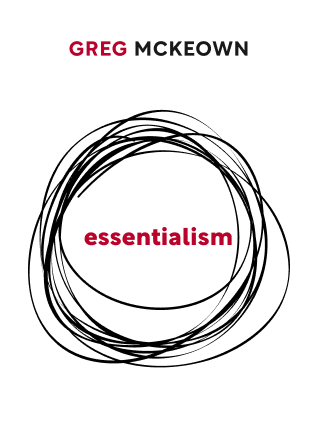

This article is an excerpt from the Shortform book guide to "Essentialism" by Greg McKeown. Shortform has the world's best summaries and analyses of books you should be reading.
Like this article? Sign up for a free trial here .
What is the sunk cost effect? Why do we keep following through on projects that stop paying off?
The sunk cost effect is a general tendency to continue on an endeavor once considerable resources have been invested into it—even when the costs start to outweigh the benefits. It’s human nature to respond this way—the more you invest, the harder it is to pull the plug on a commitment.
Keep reading to learn about the sunk cost effect.
What Is the Sunk Cost Effect?
We all find ourselves in situations where we’ve invested in something but it’s not paying off. Still, we don’t want to concede and waste the time, money, or effort we’ve already invested. For example, we sit through a movie we hate because we paid for it or we keep waiting when our doctor or lawyer is late rather than rescheduling the appointment. Similarly, people stay in bad relationships or continue gambling to win their money back.
The reason we do this is that we fall prey to the sunk cost effect—a natural tendency to follow through on an unworthwhile endeavor to justify previously invested resources.
Companies do the same thing, often suffering huge losses because of the sunk cost effect. For instance, although the Concorde jet was the fastest passenger plane in the world, it was a financial failure. It lost money for more than forty years, yet over that time the French and British governments continued to invest in it.
It’s natural to be reluctant to get out of a commitment or a pursuit once you have invested considerable resources into it. Here are some commitment traps to avoid:
- The ‘endowment effect.’ This is our tendency to overvalue things we own and place less value on things that don’t belong to us. For instance, when you rent a car, you don’t wash it before returning it because you don’t value it like you do your own car. We have this same tendency when it comes to nonessential activities, as well as belongings. When we feel we own an activity, it becomes harder to uncommit from it — for instance, your commitment to volunteer at a bake sale seems hard to get out of when you’re the one who organized the event.
- Tip: for an activity, ask how hard you’d try to get in on it if you weren’t already involved. For a possession, ask how much you’d pay for it if you didn’t own it. For an opportunity, ask, if you didn’t have the opportunity, how much would you sacrifice to get it. If the answer is “not much,” you know how much you truly value that possession or opportunity.
- Fear of wasting something. The main reason the sunk cost effect persists in spite of the evidence that the project is failing is because we have an aversion to wasting time, money, or anything that might have value somewhere. We’ve been trained this way since childhood. Abandoning a losing project feels like you’ve wasted your investment. But if you don’t let go of a bad choice, you doom yourself to wasting even more.
- Reluctance to admit mistakes. We have to admit mistakes before we can move on. By remaining in denial we continue to circle pointlessly, like people (before Google) who couldn’t stop and ask for directions because they couldn’t admit to being lost. (This is the epitome of a nonessential activity.)
- Tip: you shouldn’t be ashamed of admitting a mistake because you’re acknowledging that you’re smarter now.
- Forcing something to work. When you’ve fallen prey to the sunk cost effect, it’s tempting to keep trying to force the project to work, which of course is a waste of effort.
- Tip: to break the pattern, get a neutral second opinion. An objective observer’s opinion that it’s a lost cause can make us feel better about giving it up.
- Not questioning the status quo. We have a tendency (called the status quo bias) to keep doing something because we’ve always done it. For instance, companies keep using old systems that have long outlived their effectiveness without questioning them.
- Tip: one solution is to apply the technique of zero-based accounting (starting from scratch rather than working from last year’s budget). Apply the technique in your life this way — don’t base your time on existing commitments; assume they don’t exist and ask which ones you should include today. From scratch, justify everything you do.
- Making casual commitments. Don’t make spur-of-the-moment commitments, like when a friend mentions a new restaurant she wants to try and you say you’ll go with her. It’s easy to fill your calendar with commitments added on the fly while chatting with someone.
- Tip: pause a few seconds before answering a request to give yourself time to consider whether it’s essential. If you have second thoughts about a commitment you’ve made, it’s better to apologize and back out than to do something nonessential.

———End of Preview———
Like what you just read? Read the rest of the world's best book summary and analysis of Greg McKeown's "Essentialism" at Shortform .
Here's what you'll find in our full Essentialism summary :
- How to do less but to do it better
- Why you need to be disciplined in your pursuit of less
- How you can learn to say no






